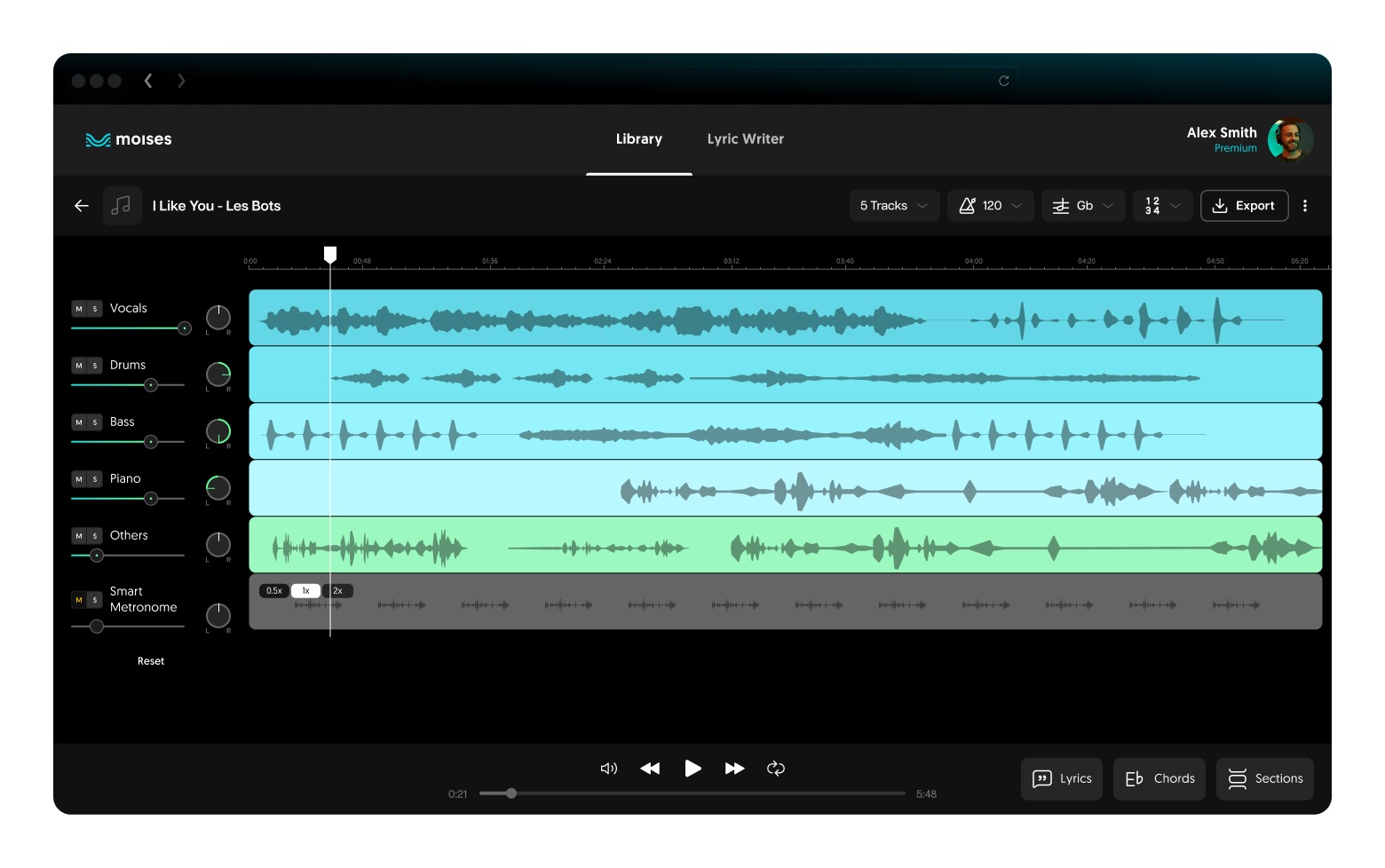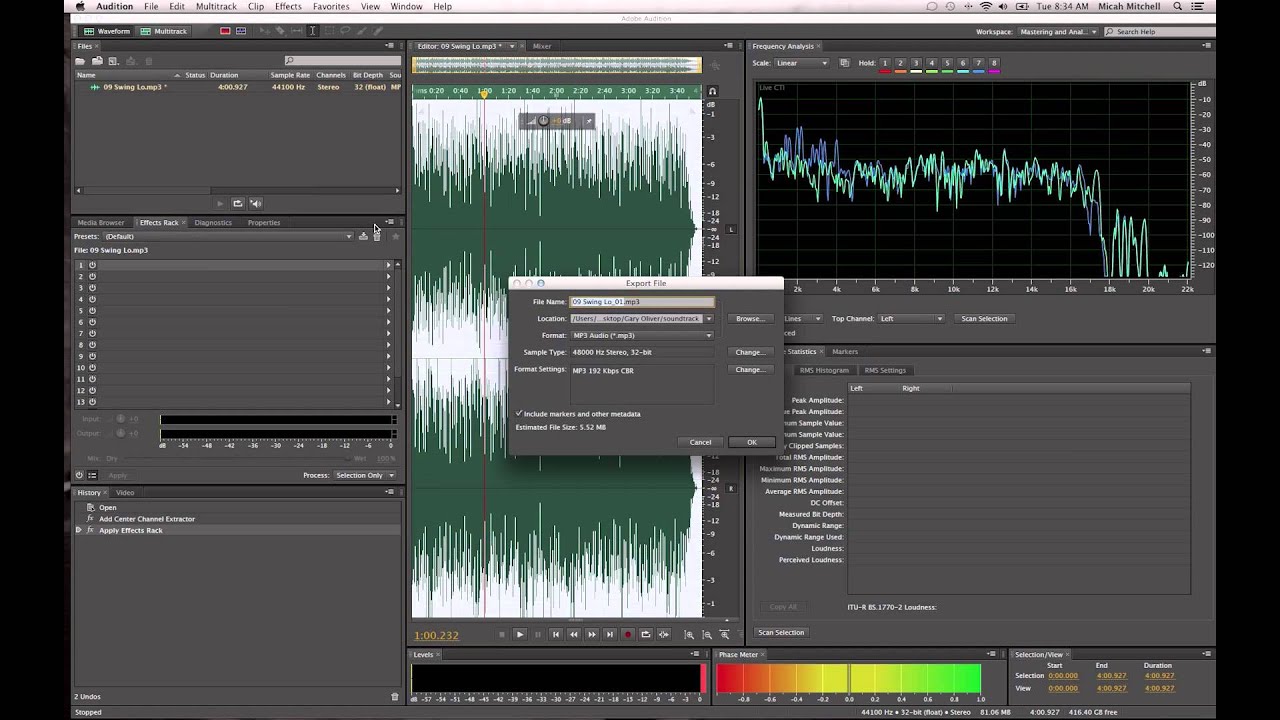Home>Events & Info>Acapella>How To Sing Acapella Songs


Acapella
How To Sing Acapella Songs
Modified: January 22, 2024
Learn how to sing acapella songs with ease and precision. Discover the techniques and skills needed to master acapella singing.
(Many of the links in this article redirect to a specific reviewed product. Your purchase of these products through affiliate links helps to generate commission for AudioLover.com, at no extra cost. Learn more)
Table of Contents
- Introduction
- Understanding Acapella Singing
- Choosing the Right Acapella Songs
- Warm-Up Exercises for Acapella Singing
- Vocal Techniques for Acapella Singing
- Blending and Harmonizing in Acapella Singing
- Tips for Solo Acapella Performances
- Tips for Group Acapella Performances
- Troubleshooting Common Issues in Acapella Singing
- Conclusion
Introduction
When it comes to music, the human voice is a powerful and versatile instrument. Acapella singing, in particular, showcases the raw talent and skill of vocalists by stripping away instrumental accompaniment and relying solely on harmonizing voices. It is a unique and impressive style of singing that has captivated audiences for centuries.
Acapella, derived from the Italian words “a cappella” meaning “in the style of the chapel,” has its roots in religious music dating back to ancient times. However, it has evolved into a genre that spans a wide range of musical styles, from pop and rock to gospel and folk. Acapella groups have gained popularity in recent years, with vocal harmony and intricate arrangements becoming the highlight of their performances.
Whether you are a seasoned musician or a beginner looking to explore the world of acapella singing, this article will guide you through the fundamentals and provide valuable tips to enhance your skills. From choosing the right acapella songs to mastering vocal techniques and harmonizing, we will cover everything you need to know to excel in this captivating art form.
So, if you are ready to embark on a journey of vocal expression and harmony, let’s dive deeper into the world of acapella singing and discover the captivating beauty of harmonizing voices.
Understanding Acapella Singing
Acapella singing is a unique style that emphasizes the human voice as the primary instrument, without the use of any instrumental accompaniment. It requires vocalists to create harmonies, imitate instruments, and showcase their individual singing abilities, all through the power of their voices. To truly grasp the essence of acapella, it is important to understand its key components.
One of the most notable aspects of acapella singing is vocal harmony. This involves multiple singers blending their voices to create a unified sound. Each vocalist takes on a specific vocal part, such as soprano, alto, tenor, or bass, and together they create a rich and layered texture of harmonies. The skill lies in achieving a seamless blend of voices, where no one voice stands out but instead contributes to the collective sound.
Rhythm and timing are also vital in acapella singing. Since there is no instrumental accompaniment to rely on, the singers must internalize the rhythm and execute precise timing. This requires a strong sense of rhythm and meticulous coordination between the vocalists to maintain a steady tempo and ensure synchronized entrances and exits.
Another key aspect of acapella singing is the use of vocal percussion. Vocal percussion involves creating rhythmic sounds using only the voice, such as beatboxing, mouth drumming, or vocalizing drum patterns. This technique adds depth and texture to the music, simulating the sound of drums or other percussive instruments.
Lastly, acapella singing often involves improvisation and creative vocal arrangements. Vocalists have the freedom to experiment with various harmonies and vocal embellishments to create unique interpretations of songs. This allows for individual expression and adds a personal touch to the performance.
By understanding these fundamental aspects of acapella singing, you can develop a deeper appreciation for the art form and the skill required to produce captivating acapella performances. So, let’s move on and explore how to choose the right songs for acapella singing.
Choosing the Right Acapella Songs
Choosing the right acapella songs is crucial to ensure a successful and enjoyable performance. The song selection should complement the strengths and abilities of the vocalists, as well as resonate with the audience. Here are some tips to help you make the best song choices for your acapella group or solo performance.
- Know your vocal range: Consider the vocal range and capabilities of the singers in your group. Choose songs that suit their vocal tessitura (the most comfortable range of their voice) and showcase their strengths. It’s essential to choose songs that allow each vocalist to shine, whether they are soprano, alto, tenor, or bass.
- Consider the genre: Acapella music spans various genres, including pop, rock, R&B, gospel, jazz, and more. Select songs that align with the style and preferences of your group, ensuring they feel comfortable and confident in delivering the performance. It’s also a good idea to mix up the genre selections to create a diverse and engaging setlist.
- Listen to the song: Before finalizing a song choice, listen to different versions and recordings of the song to get a feel for its acapella potential. Pay attention to the melody, harmonies, and potential vocal arrangements that can be created. It’s important to choose songs that have interesting and harmonically rich elements that can be showcased in an acapella arrangement.
- Consider the audience: Take the audience into consideration when choosing acapella songs. Consider the age group, cultural background, and preferences of the audience you will be performing for. Select songs that resonate with the audience and have the potential to evoke an emotional response or nostalgic connection.
- Balance variety and cohesion: Aim for a balanced setlist that offers variety in tempo, mood, and dynamics. Include upbeat and energetic songs to engage the audience, as well as slower ballads or emotional pieces to create a dynamic range. Ensure that the songs flow smoothly together and create a cohesive and enjoyable listening experience.
Remember that selecting the right songs is a collaborative effort. Involve the vocalists in the decision-making process and consider their input and preferences. This will not only result in a more enjoyable performance but also boost the confidence and commitment of each member.
Now that you have a better understanding of how to choose the right acapella songs, let’s move on to discussing warm-up exercises that are essential for acapella singing.
Warm-Up Exercises for Acapella Singing
Warm-up exercises are essential for preparing your voice and vocal cords before diving into acapella singing. These exercises help improve vocal flexibility, range, and control, ensuring that you are ready to tackle the challenges of harmonizing and blending in an acapella setting. Here are some warm-up exercises to incorporate into your acapella singing routine:
- Vocal Stretching: Start by gently stretching your facial muscles and lips. Open your mouth wide and make exaggerated yawning movements to loosen up your jaw. Move your tongue in circular motions and slide it from side to side to relax your tongue muscles.
- Lip Trills: This exercise helps to warm up your lips and tongue muscles. Start by lightly pressing your lips together and blow air through them, creating a gentle buzzing sound. Gradually increase the intensity while maintaining a relaxed and controlled airflow.
- Tongue Twisters: Tongue twisters are excellent for improving diction and articulation. Choose various tongue twisters that focus on different sounds and syllables, and practice them slowly and gradually increase the speed. This exercise helps to warm up your tongue and improve clarity in your singing.
- Scales and Arpeggios: Practicing scales and arpeggios is essential for vocal warm-up. Start by singing ascending and descending scales, focusing on proper breath support, and maintaining a clear and consistent tone. Practice arpeggios, which are broken chords, to improve your control over pitch and intervals.
- Vocal Slides: Begin with gentle glides between the lower and higher parts of your vocal range to warm up your voice and improve vocal flexibility. Gradually increase the range and speed of the slides while maintaining a smooth and controlled transition.
- Interval Training: Exercises that focus on intervals help improve pitch accuracy and enhance your ability to harmonize. Practice singing specific intervals, such as thirds, fourths, fifths, etc., both ascending and descending. This will help you develop a keen sense of relative pitch and improve your ability to harmonize with other voices.
Remember to always start with gentle exercises and gradually increase the intensity and range as your voice becomes more warmed up. It’s essential to maintain proper breath support, posture, and relaxation throughout these warm-up exercises. Take breaks if needed and listen to your body to avoid any strain or vocal fatigue.
By incorporating these warm-up exercises into your acapella singing routine, you will prepare your voice for the challenges ahead and optimize your vocal performance. Now that you’re warmed up, let’s explore some essential vocal techniques for acapella singing.
Vocal Techniques for Acapella Singing
Vocal techniques play a crucial role in acapella singing, allowing vocalists to produce a rich and harmonious sound while maintaining individuality within the group. Here are some essential vocal techniques to master for acapella singing:
- Breath Control: Proper breath control is fundamental for acapella singing. Practice diaphragmatic breathing, where you inhale deeply, expanding your diaphragm and filling your lungs with air. This will provide you with the breath support needed for sustained singing and enable you to maintain a consistent tone and control the dynamics of your voice.
- Posture and Alignment: Good posture is essential for optimal vocal production. Stand tall with your feet shoulder-width apart and align your head, neck, and spine. This posture allows for better breath control and encourages the free and unrestricted flow of air. Avoid tension in the neck and shoulders, as it can hinder vocal delivery.
- Articulation and Diction: Clear and precise articulation enhances the intelligibility of your singing. Practice enunciating consonants and vowels distinctly, ensuring that each word is crisp and well-defined. Pay attention to the clarity of your vowels and the precision of your consonants to improve the overall diction in your acapella performances.
- Vocal Resonance: Develop proper vocal resonance to create a resonant and rich sound. Experiment with different vocal resonators such as the chest, mouth, and nasal cavities, to find the balance that produces the best sound for your voice. Utilize resonance to add depth and warmth to your acapella singing.
- Dynamic Control: Mastering dynamic control is important in acapella singing to create variation and expressiveness in your performance. Practice singing passages with different dynamics, ranging from soft and gentle to powerful and intense. Focus on seamlessly transitioning between different dynamic levels to add nuance and emotion to your acapella singing.
- Blend and Balance: One of the key elements of acapella singing is blending your voice with others in the group to create a unified sound. Pay attention to matching the tone, vowel placement, and intensity of your voice with the other vocalists. Listen to each other and work on achieving a seamless blend and balance of voices.
Remember that consistent practice and experimentation are essential for mastering these vocal techniques. Each vocalist’s voice is unique, and it may take time to find the right approach that works best for you. Be patient with yourself and embrace the process of developing your acapella singing skills.
Now that we have explored the essential vocal techniques, let’s move on to discussing blending and harmonizing in acapella singing.
Blending and Harmonizing in Acapella Singing
Blending and harmonizing are essential components of acapella singing that lend depth, richness, and complexity to the overall vocal sound. Effective blending allows individual voices to merge together seamlessly, creating a unified and harmonious sound. Here are some tips to help you achieve optimal blending and harmonizing in your acapella performances:
- Listening and Adjusting: One of the keys to successful blending is active listening. Pay attention to the voices around you and adjust your own tone, pitch, and dynamics to match. Aim to create a collective sound where no single voice stands out, but instead, all voices contribute to a balanced and cohesive blend.
- Matching Vowel Sounds: Vowel matching is crucial for achieving seamless blending. Work on matching the placement and shape of your mouth and tongue to achieve uniform vowel sounds with the other vocalists. Pay attention to the specific vowel sounds in each word and aim for precise and consistent execution.
- Tuning and Pitch Accuracy: Harmonizing requires precise pitch accuracy. Practice matching and sustaining pitches with other vocalists to create harmonies that blend beautifully. Utilize tools such as pitch pipes or tuning apps to ensure accurate intonation. Regular ear training exercises can also help develop your ability to hear and adjust to different harmonies.
- Dynamics and Expression: Harmonizing isn’t just about pitch; it’s also about expression. Work on coordinating dynamics with the group to create moments of intensity and subtlety. Pay attention to dynamic nuances within phrases, such as swells and fades, to add depth and emotion to your harmonies.
- Vocal Agility: Develop vocal agility to execute intricate harmonies with ease. Practice scales, interval exercises, and melodic patterns to expand your vocal range and flexibility. This will enable you to navigate complex harmonies accurately and confidently.
- Rehearsal and Ensemble Dynamics: Regular rehearsal is essential for acapella groups to develop a strong sense of ensemble dynamics. Experiment with different group configurations and listen to how different voices blend and interact. Use this time to fine-tune sections where blending and harmonizing may need adjustment.
Blending and harmonizing in acapella singing is all about finding a perfect balance between individuality and unity. Each vocalist brings their unique tone and style to the group, but it is through blending and harmonizing that the magic of acapella singing truly comes to life.
Now that you understand the techniques behind blending and harmonizing, let’s move on to discussing tips for solo acapella performances.
Tips for Solo Acapella Performances
Solo acapella performances present a unique opportunity for vocalists to showcase their individual talent, artistry, and vocal prowess. Whether you’re performing in a formal setting or sharing your rendition online, here are some valuable tips to enhance your solo acapella performance:
- Select the Right Song: Choose a song that highlights your vocal range, strengths, and style. Consider the emotional connection you have with the song and how well it suits your voice. Selecting the right song will help you convey authenticity and captivate your audience.
- Embrace Vocal Dynamics: Demonstrate vocal control and dynamics in your performance. Utilize vocal techniques such as crescendos, decrescendos, and subtle variations in volume to evoke emotion and create a compelling performance.
- Add Vocal Flourishes: Showcase your vocal skills by adding tasteful embellishments and melodic flourishes to the song. However, ensure that these embellishments enhance the song and do not overshadow the overall performance.
- Pay Attention to Articulation: Be mindful of your articulation and diction. Clearly pronounce each word and syllable to ensure that your audience can understand the lyrics and connect with the message of the song.
- Engage with the Audience: Connect and engage with your audience by establishing eye contact, using gestures, and conveying emotions through your facial expressions. This will help create a more dynamic and memorable performance.
- Utilize Stage Presence: Make use of the entire performance space and consider your stage presence. Use movement, whether subtle or energetic, to enhance the visual aspect of your performance and bring the song to life.
- Experiment with Vocal Effects: Explore the use of vocal effects to add depth and uniqueness to your solo acapella performance. Experiment with techniques such as vocal percussion or vocal loops to create interesting layers and textures.
- Practice, Practice, Practice: Dedicate ample time to rehearsing your solo acapella performance. Practice not only the technical aspects but also the emotional delivery of the song. Familiarize yourself with every nuance of the performance to ensure a confident and polished delivery.
- Seek Feedback: Seek feedback from trusted mentors, vocal coaches, or fellow musicians. Constructive criticism can help you identify areas for improvement and refine your solo acapella performance to its fullest potential.
- Be Authentic: Above all, be true to yourself and embrace your unique style and interpretation of the song. Your authenticity and passion will shine through, making your solo acapella performance truly captivating and memorable.
By keeping these tips in mind, you can elevate your solo acapella performance and leave a lasting impression on your audience. Now, let’s move on to discussing tips for acapella performances in groups.
Tips for Group Acapella Performances
Group acapella performances offer a unique opportunity to create intricate harmonies and showcase the power of collective voices. To ensure a successful and engaging group acapella performance, here are some valuable tips to keep in mind:
- Establish a Strong Musical Foundation: Build a strong musical foundation by rehearsing together regularly. Focus on developing a deep understanding of each member’s vocal range, strengths, and abilities. This will allow you to blend voices effectively and create harmonies that complement one another.
- Assign Vocal Parts: Assign specific vocal parts based on each member’s range and vocal ability. Ensure that everyone feels comfortable and confident in their assigned role. This will contribute to a more balanced sound and enhance the overall performance.
- Communication and Listening: Communication is key in group acapella performances. Establish effective communication channels to discuss and address any challenges or adjustments needed in the performance. Actively listen to one another to maintain a cohesive and synchronized sound.
- Coordinate Visual Presentation: Pay attention to the visual aspect of your group acapella performance. Coordinate your attire, stage presence, and movements to create a visually appealing and unified presentation. This will enhance the overall impact of your performance.
- Blend Voices Seamlessly: Practice blending your voices seamlessly to create a unified sound. Focus on matching pitch, tone quality, and dynamics with one another. Pay attention to the balance between individual vocal expression and the collective blend, striving for a harmonious and captivating performance.
- Utilize Vocal Percussion: Incorporate vocal percussion techniques to add rhythmic elements to your group performance. Experiment with beatboxing, mouth drumming, or vocalizing percussive patterns to enhance the rhythmic complexity and texture of your acapella arrangements.
- Explore Creative Arrangements: Experiment with creative vocal arrangements to make your group acapella performance stand out. Explore different harmonies, vocal textures, and vocal effects to add depth and interest to the arrangements. This will captivate the audience and showcase the versatility of your group.
- Engage with Each Other and the Audience: Foster a sense of connection and engagement within the group. Interact with one another, making eye contact and using subtle cues to enhance the performance. Additionally, connect with the audience through enthusiastic energy and genuine expressions, building a connection that transcends the stage.
- Utilize Rehearsal Time Efficiently: Make the most of your rehearsal time by prioritizing important sections that need refinement. Focus on areas that require synchronization, intonation, or dynamics, and work as a cohesive unit to address these areas. Utilize rehearsal time efficiently to ensure a polished and well-executed performance.
- Support and Encourage Each Other: Foster a positive and supportive atmosphere within the group. Offer constructive feedback and encouragement to one another, recognizing individual achievements and contributions. Building a strong sense of camaraderie will elevate the group’s performance and create a memorable experience for both the performers and the audience.
By incorporating these tips into your group acapella performances, you can create a harmonious and captivating musical experience. Now, let’s move on to troubleshooting common issues that may arise in acapella singing.
Troubleshooting Common Issues in Acapella Singing
Acapella singing, despite its beauty, can come with its fair share of challenges. However, with the right approach and awareness, you can effectively troubleshoot and overcome common issues that may arise during acapella performances. Here are some common issues and their solutions:
- Pitch Problems: If you’re struggling with pitch accuracy, consider practicing ear training exercises to improve your ability to hear and adjust to different harmonies. Utilize tools like pitch pipes or tuning apps to ensure you are starting on the correct pitch.
- Lack of Blend: Achieving a seamless blend is vital in acapella singing. If you’re facing a lack of blend, focus on actively listening to the voices around you and adjusting your tone, pitch, and dynamics to match. Experiment with different vowel matching and vowel placement techniques to create a unified sound.
- Timing and Rhythm Issues: If you’re struggling with timing and rhythm, practice with a metronome or a backing track to develop a solid sense of timing. Work on internalizing the pulse and coordinating entrances and exits with precision. Also, pay attention to the rhythmic patterns created by other vocalists and ensure that you sync seamlessly with them.
- Enunciation and Diction: If your lyrics aren’t clear or your diction lacks precision, focus on articulation exercises to improve your enunciation. Practice pronouncing each word and syllable with clarity, paying attention to consonant sounds as well. Record yourself and listen back to identify areas where your diction can be clearer.
- Inconsistent Dynamics: Achieving consistent dynamics is crucial for a captivating acapella performance. If you’re struggling with inconsistent dynamics, practice precise control over your breath support. Focus on maintaining a steady and controlled airflow, and practice gradual variations in volume during rehearsal to develop a sense of dynamic control.
- Overpowering or Underpowering Voice: If your voice is overpowering or underpowering compared to others in the group, actively adjust the intensity of your voice. Pay attention to the overall balance of sound and ensure that you are blending with the group rather than overpowering or being drowned out by others. Experiment with different levels of vocal projection to find the right balance.
- Lack of Confidence: Building confidence in acapella singing takes time and practice. Surround yourself with supportive and encouraging individuals who can provide constructive feedback. Rehearse regularly and focus on improving one aspect of your performance at a time. Remember to celebrate small victories and remind yourself of your progress along the way.
By addressing these common issues head-on and implementing targeted solutions, you can overcome obstacles in your acapella singing. Remember that persistence, practice, and a positive mindset are key to continual growth and improvement.
Now that we have explored troubleshooting common issues, let’s conclude our journey through the world of acapella singing.
Conclusion
Acapella singing is a captivating and expressive art form that showcases the beauty and power of the human voice. Whether you’re performing as a soloist or part of a group, acapella singing requires skill, coordination, and a deep understanding of vocal techniques.
In this article, we’ve covered the fundamental aspects of acapella singing, from understanding the art form to choosing the right songs and mastering vocal techniques. We explored the importance of blending and harmonizing in creating a unified and harmonious sound. We also discussed valuable tips for solo acapella performances, such as selecting the right song and engaging with the audience.
For group acapella performances, we emphasized the significance of communication, coordination, and synchronization. We provided tips for troubleshooting common issues that may arise during acapella singing, ensuring that you can confidently overcome challenges and deliver exceptional performances.
Remember, acapella singing is an ongoing journey of growth and exploration. Continual practice, rehearsal, and feedback are essential for honing your skills and becoming a proficient acapella singer. Embrace your unique voice, express yourself authentically, and let the power of acapella music captivate and inspire both you and your audience.
So now, armed with knowledge and a passion for acapella singing, it’s time to embark on your own musical journey. Let your voice soar and harmonize with others, creating transcendent moments of vocal magic. Happy singing!











